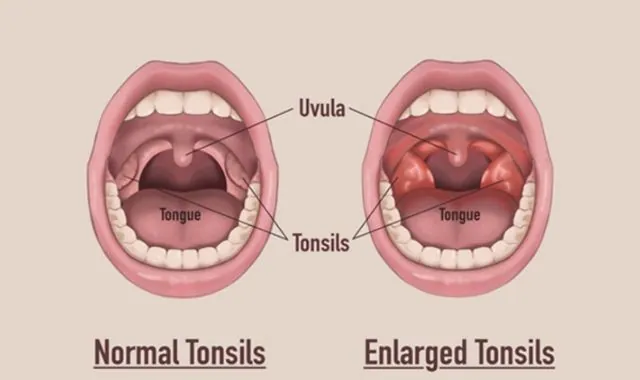Physical Address
304 North Cardinal St.
Dorchester Center, MA 02124

Tonsils, those small, oval-shaped glands located at the back of your throat, often become a topic of concern for many. They play a significant role in our immune system but can also be the source of various health issues, leading to surgical removal in some cases. If you’ve had a tonsillectomy or are considering one, you might wonder: Do Tonsils Grow Back? This article dives deep into the anatomy and function of tonsils, the tonsillectomy process, the potential for regrowth, symptoms of enlarged tonsils, and what to do if issues arise again. Let’s explore this fascinating topic in detail.

Tonsils are part of the body’s lymphatic system, which plays a crucial role in immune function. They are essentially clusters of lymphoid tissue that help in filtering out pathogens—like bacteria and viruses—that enter through the mouth and nose. But what exactly are they made of, and how do they function? Let’s take a closer look.
The tonsils are located on either side of the throat and are comprised of lymphatic tissue. There are three main types of tonsils:
Together, these tonsils form a ring of lymphatic tissue known as Waldeyer’s ring, which is critical for trapping germs entering the body through the mouth and nose.
The primary function of the tonsils is to act as the body’s defense mechanism against infections. They contain immune cells that produce antibodies and help in the formation of memory cells that remember past infections. Here are a few key functions:
While tonsils are essential for our immune system, they can sometimes become overwhelmed, leading to health problems.
Tonsillectomy is a surgical procedure to remove the tonsils. This procedure is commonly performed on children, but adults may also undergo it if they experience recurring tonsil-related issues.
There are several reasons why tonsillectomy may be recommended:
In some cases, a healthcare provider may recommend tonsillectomy as a preventive measure, especially if there’s a history of recurrent throat infections.
The tonsillectomy procedure typically involves the following steps:
While tonsillectomy is generally safe, like any surgery, it does carry some risks, including bleeding and infection.
After having tonsils removed, one may wonder whether they can grow back. This is a legitimate concern, especially for those who have experienced recurrent symptoms after surgery.
When tonsils are removed, the tissue is excised from the throat. Unlike some body tissues, tonsils do not regenerate in the same way as skin or liver cells. However, there are instances where individuals may experience symptoms similar to those caused by tonsils.
While true regrowth of tonsils after a complete tonsillectomy is rare, there are some cases where individuals report a return of tonsil-like symptoms. This can happen for several reasons:
Several factors can influence whether someone may experience tonsil-like symptoms after surgery:
If you’ve had your tonsils removed but experience throat discomfort, it’s essential to recognize the signs of enlarged or inflamed tonsils, even if they’re not present anymore. Here are the symptoms to watch for:
If you notice these symptoms, it’s crucial to consult a healthcare provider for evaluation.
If you suspect that your tonsils have regrown or that you are experiencing similar symptoms, it’s essential to take action.
The first step is to consult a healthcare provider. They can perform a thorough examination and may recommend diagnostic tests to determine the cause of your symptoms. Depending on the findings, they may suggest treatment options tailored to your specific situation.
If it is determined that you have residual tonsil tissue causing problems, there are several treatment options available:
Maintaining good oral and throat health can go a long way in preventing issues related to tonsils or similar symptoms.
Here are some tips for keeping your oral health in check:
In summary, while Do Tonsils Grow Back?after a complete tonsillectomy, individuals may experience symptoms reminiscent of tonsil-related issues due to residual tissue or other factors. Recognizing the signs of potential problems, consulting with a healthcare provider, and maintaining good oral health can significantly contribute to your overall well-being. If you have concerns about your tonsils or throat health, don’t hesitate to seek professional advice.
Yes, tonsillectomy is not limited to children. Many adults undergo the procedure, especially if they experience recurrent tonsillitis or other related issues.
As with any surgical procedure, tonsillectomy carries risks, including bleeding, infection, and adverse reactions to anesthesia. However, these risks are generally low.
If you frequently experience sore throats, difficulty breathing, or swallowing, consult your healthcare provider. They can evaluate your symptoms and recommend whether tonsillectomy is appropriate.
Most individuals report improved throat health and fewer infections post-surgery. However, some may experience changes in their immune response, though these effects are typically minimal.
Maintaining good oral hygiene, staying hydrated, avoiding irritants, and scheduling regular check-ups with your healthcare provider can help prevent tonsil-related issues and promote overall throat health.